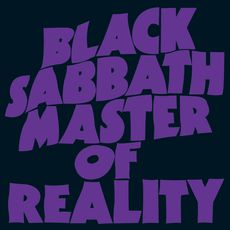In 1968, Birmingham, a city heavily influenced by the buzz surrounding Liverpool’s Mersey Sound, produced blues, folk and psychedelic rock acts including future big names The Spencer Davis Group, The Moody Blues and Traffic. The Beatles were about to release their “White Album”, Jimi Hendrix was adding the final touches to Electric Ladyland and, more notably, San Diego band Iron Butterfly had just released the 17-minute In-A-Gadda-Da-Vida which introduced the charts to “hard rock” and the sonic revolution spearheaded by Black Sabbath.
“Liverpool opened up an enormous market and in consequence most big cities, Birmingham, London, Newcastle and Manchester garnered an exceptional wealth of groups”, recalls Bill Ward, Black Sabbath’s drummer, “New clubs opened, the whole world was involved, and there was a sense of revolution in the air and a desire to move in all sorts of directions, but, above all, there was a will to find a sound different to everyone else.”
This individuality was born through an accident in one of Birmingham’s steel factories when a young Tony Iommi, who had been playing guitar for a few years, cut off the ends of two fingers on his right hand, the middle and ring fingers. Doctors explained to him that he would never be able to play the guitar again, plunging Iommi into despair until a friend made him listen to a record by Django Reinhardt who similarly only had use of three fingers on his left hand. Iommi’s confidence was renewed and with iron and plastic he fashioned two rudimentary prosthetics which he brought to the hospital to be adjusted. He then adapted his guitar playing to use only power chords which, although simpler, sound a lot stronger.
Iommi went to school with John Michael Osbourne, a garish loose cannon and singer for the long-forgotten band, Rare Breed, who broke up in August 1968. Nicknamed “Ozzy”, the singer had no intention of giving up his quest for glory. Osbourne packed his bags along with bassist Terence “Geezer” Butler. Iommi, on his part, wandered from band to band, notably the group Mythology in which he was joined by Bill Ward, a drummer with whom he had already played, in the band The Rest from 1966 until the end of 1967. This new project with Ward came to a swift end when, during a raid, police found cannabis in their possession and branded them as pot-smokers, arising suspicion and mistrust among concert schedulers.
In July 1968, our protagonists all found themselves without a band. Bill Ward, Geezer Butler, Tony and Ozzy came together to form The Polka Tulk Blues Company. At their side was the adept slide guitarist, Jimmy Philips, and saxophonist Alan Clarke, who would come to leave the band several months later. The group renamed themselves Polka Tulk, then Earth and played an impactful, almost hypnotic, take on heavy blues. They earned their stripes playing several gigs at the town’s rock pub, Henry’s Blueshouse, who’s landlord, Jim Simpson, would go on to be the band’s first manager. Playing there was a beneficial experience which taught them to improvise and play extended versions of the few songs they had. Soon after, fate would come knocking at the door. “On the same road, just in front of our local, was a cinema showing mostly horror films”, explains Ozzy Osbourne. “We found it strange that people would spend their money on getting scared. No one was listening to our music so we decided to make it more freaky. And that’s how it all started.”
Create a free account to keep reading






